
The Venice Biennale 2014 - Elements of Architecture, Monditalia
“Astonish me!”
Sergej Diaghilev in conversation with Jean Cocteau
Regular visitors of the Venice Biennale know their role perfectly – they leisurely glide through the Central Pavilion in Giardini, evaluating new buildings by star architects such as Zaha Hadid or H&deM, casually sitting among the national pavilions sipping Aperol Spritz, or snacking in one of the tucked-away cafés and restaurants in the nearby Castello neighborhood, where the second main part of the Biennale exhibition is located in the former docks at the Arsenale. The authors of this year's Venice Biennale claim that it is unique – it does not showcase star architects but architecture itself, and the curators invested two years preparing it. What astonishes us about the Biennale this year?
“Architecture, not architects” is the main slogan of the 14th Venice Architecture Biennale. Rem Koolhaas presents a grand theater in the exhibition Elements of Architecture – he breaks architecture into fragments and meticulously examines one architectural element after another to uncover the causes of today’s bleak architectural state. Koolhaas's diagnosis is deadly; the neoliberal market has pushed architects into the arms of private investors – architects “no longer serve 'you' but 'them.'” Globalization and digital technology have contributed to the standardization and unification of architecture.
Elements of Architecture is an exhibition curated by Rem Koolhaas and Stephan Trüby. The main source is a book, an encyclopedia of nearly 2500 pages that maps the historical development of seventeen architectural elements beautifully from the beginnings. It has been created since 2012 under the auspices of the research platform OMA - AMO, theorists, and students from Harvard University. The work on the exhibition took place in parallel, more as an illustration of the book. The book forms the framework of the entire Central Pavilion in Giardini, with each chapter/element of architecture dedicated to a room. However, the book is not the exhibition, and the exhibition is not the book. How to display the gathered information?
We find ourselves in the world of a fanatic collector. Stephan Trüby and his team focused on collecting architectural artifacts from all corners of the world for the exhibition. Their biggest discovery is the archive of Friedrich Mielke, the founder of the science of staircases (scalology). Mielke, a war veteran who lost a leg in battle, documented staircases primarily in southern Germany and Europe throughout his life and distilled his knowledge into 26 books on staircases. A rarity is also the multi-kilometer system of underground corridors and apartments at Welbeck Abbey, built by the eccentric fifth Duke of Portland near Nottingham at the end of the 19th century.
In each of the 16 rooms, material representation of architecture dominates – archives or company mock-ups, product samples, and technological processes form the main exhibits of the show. Five rooms (hallway, ceiling, facade, floor, balcony) were curated by selected theorists – Manfredo di Robilant created an astonishing retro-futuristic entrance space – a vault with wall paintings by Galileo Chici (1909) depicting the evolution of art obstructed by a false ceiling with air conditioning ducts and technical installations standing 2.7 meters high. The cut through the structure creates a collage of two worlds, the blue-gold symbolism of the dome and the standard utilitarianism of the present, contrasting iconography and rationality of architecture. Tom Avermaete (TU Delft) focuses on the figure of the balcony as an actor of crucial moments in history – it serves as an elevated platform for dictators and various revolutions, uprisings, and demonstrations – on the exhibition you can find a photograph of Václav Havel on Wenceslas Square in Prague in 1989 and balconies of Adolf Hitler and Benito Mussolini. Avermaete presents a typological study and a three-dimensional representation of iconic balconies such as Haussmann's or a Bauhaus balcony in another part of the exhibition. The entire exhibition closes with “Book for Architects” by the prominent German photographer Wolfgang Tillmans.
We find wonderfully narrated stories and spectacular installations; however, at times the exhibition suffers from an overload of information and objects. Without a single floor plan, sketches, and photographs of buildings, and primarily personal creative approaches of the architects, the connection between the individual elements and “real” architecture is lacking.
All the more surprising is Monditalia, which in a way serves as a counterpoint to Elements – the rational, microscopic way of examining architecture contrasts with the ad hoc improvised space in the Arsenale. Monditalia is both an exhibition and a stage, a dynamic collage of architecture, film, dance, theater, and music. The younger generation is given a voice through curator Ippolito Pestellini Laparelli (AMO), who presents a scan of Italy from south to north, from North Africa to the Alps. The spatial axis – a Roman map of Italy from the fifth century – Tabula Peutingeriana, separates the main exhibition – 41 case studies from projections of 82 mostly Italian feature films. Tabula Peutingeriana places Italy at the center of the world from India to Scotland. The map does not display state borders, only a network of cities and places, and it represents the concept of Monditalia – the special focus on Italy is an analogy for events and processes currently happening on a global scale in various places of the world.
Radical Pedagogies is a research project developed under the leadership of Beatriz Colomina at Princeton University. It focuses on pedagogical strategies and practices after World War II – a space for experimentation and a new definition of themes and agendas of architectural creation opened up in the university environment. Architects like Aldo Rossi, Lina Bo Bardi, and theorists like Bruno Zevi and Manfredo Tafuri influenced the careers of crucial architectural figures. The project's radius is global, describing even the experimental teaching of Oswald Matias Ungers in Berlin, Frei Otto in Stuttgart, the first department of architectural theory co-founded by Dalibor Veselý and Joseph Rykwert, or Álvaro Siza, whose activities in the field of social housing shaped the teaching methods at a significant architecture school in Porto. Kenzo Tange's studio at the University of Tokyo was at the roots of the metabolist movement and was key for an entire post-war generation of Japanese architects and others.
The abandoned congress palace on the island of La Maddalena near Sardinia was designed by Stefano Boeri for the never-realized G8 summit in 2009. The subtle construction, glass walls, and ornamental lattice are now in ruins. In a suggestive interview, the architect describes the inability and corruption of local politics and the helplessness of the individual, the author, and the architect. The global perspective is confronted with a second film, featuring the solitary Robinson Crusoe-like life of the caretaker of a nearby island.
Monditalia provokes more questions than it offers answers, opening space for chance and improvisation. In the current relevance and openness of topics, visitors return to architecture in the question of how to approach these issues architecturally, the role architecture and architects can play. Monditalia suggests what architecture could be – not an autonomous discipline, but a critical and active agent, a catalyst for political and social processes.
The Biennale is primarily a social event. During the festive opening – a preview for the press, curators, and cultural institutions' representatives take place not only the opening of exhibitions and press conferences but also lectures and discussion panels. This year, the Giardini was dominated by the curator of the Swiss Pavilion, Hans Ulrich Obrist, whose voice resonated through the gardens moderating a marathon of interviews and discussions with contemporary architects and artists (Herzog & de Meuron, Christian Kerez, Jesko Fezer, Tino Sehgal, and others) throughout the preview. Videos related to Elements of Architecture and Monditalia are available to watch online. From a geopolitical point of view, the exhibition “Lifting the Iron Curtain”, mapping Central European architectural networks prepared by the Polish think tank TRACE in collaboration with the Prague-based CCEA and others, is definitely worth a visit. The platform Failed Architecture critically delineated itself against Koolhaas during its event outside the main exhibition, and during a several-hour discussion, a list of 12 alternative fundamentals (public, anchoring, policies, history and preservation, internet, money, the role of the client,...) was crystallized, which may eventually be further elaborated upon.
Throughout the Biennale, there will be Weekend Specials with selected guests at the Arsenale.
Sergej Diaghilev in conversation with Jean Cocteau
Regular visitors of the Venice Biennale know their role perfectly – they leisurely glide through the Central Pavilion in Giardini, evaluating new buildings by star architects such as Zaha Hadid or H&deM, casually sitting among the national pavilions sipping Aperol Spritz, or snacking in one of the tucked-away cafés and restaurants in the nearby Castello neighborhood, where the second main part of the Biennale exhibition is located in the former docks at the Arsenale. The authors of this year's Venice Biennale claim that it is unique – it does not showcase star architects but architecture itself, and the curators invested two years preparing it. What astonishes us about the Biennale this year?
“Architecture, not architects” is the main slogan of the 14th Venice Architecture Biennale. Rem Koolhaas presents a grand theater in the exhibition Elements of Architecture – he breaks architecture into fragments and meticulously examines one architectural element after another to uncover the causes of today’s bleak architectural state. Koolhaas's diagnosis is deadly; the neoliberal market has pushed architects into the arms of private investors – architects “no longer serve 'you' but 'them.'” Globalization and digital technology have contributed to the standardization and unification of architecture.
Elements of Architecture is an exhibition curated by Rem Koolhaas and Stephan Trüby. The main source is a book, an encyclopedia of nearly 2500 pages that maps the historical development of seventeen architectural elements beautifully from the beginnings. It has been created since 2012 under the auspices of the research platform OMA - AMO, theorists, and students from Harvard University. The work on the exhibition took place in parallel, more as an illustration of the book. The book forms the framework of the entire Central Pavilion in Giardini, with each chapter/element of architecture dedicated to a room. However, the book is not the exhibition, and the exhibition is not the book. How to display the gathered information?
We find ourselves in the world of a fanatic collector. Stephan Trüby and his team focused on collecting architectural artifacts from all corners of the world for the exhibition. Their biggest discovery is the archive of Friedrich Mielke, the founder of the science of staircases (scalology). Mielke, a war veteran who lost a leg in battle, documented staircases primarily in southern Germany and Europe throughout his life and distilled his knowledge into 26 books on staircases. A rarity is also the multi-kilometer system of underground corridors and apartments at Welbeck Abbey, built by the eccentric fifth Duke of Portland near Nottingham at the end of the 19th century.
In each of the 16 rooms, material representation of architecture dominates – archives or company mock-ups, product samples, and technological processes form the main exhibits of the show. Five rooms (hallway, ceiling, facade, floor, balcony) were curated by selected theorists – Manfredo di Robilant created an astonishing retro-futuristic entrance space – a vault with wall paintings by Galileo Chici (1909) depicting the evolution of art obstructed by a false ceiling with air conditioning ducts and technical installations standing 2.7 meters high. The cut through the structure creates a collage of two worlds, the blue-gold symbolism of the dome and the standard utilitarianism of the present, contrasting iconography and rationality of architecture. Tom Avermaete (TU Delft) focuses on the figure of the balcony as an actor of crucial moments in history – it serves as an elevated platform for dictators and various revolutions, uprisings, and demonstrations – on the exhibition you can find a photograph of Václav Havel on Wenceslas Square in Prague in 1989 and balconies of Adolf Hitler and Benito Mussolini. Avermaete presents a typological study and a three-dimensional representation of iconic balconies such as Haussmann's or a Bauhaus balcony in another part of the exhibition. The entire exhibition closes with “Book for Architects” by the prominent German photographer Wolfgang Tillmans.
We find wonderfully narrated stories and spectacular installations; however, at times the exhibition suffers from an overload of information and objects. Without a single floor plan, sketches, and photographs of buildings, and primarily personal creative approaches of the architects, the connection between the individual elements and “real” architecture is lacking.
All the more surprising is Monditalia, which in a way serves as a counterpoint to Elements – the rational, microscopic way of examining architecture contrasts with the ad hoc improvised space in the Arsenale. Monditalia is both an exhibition and a stage, a dynamic collage of architecture, film, dance, theater, and music. The younger generation is given a voice through curator Ippolito Pestellini Laparelli (AMO), who presents a scan of Italy from south to north, from North Africa to the Alps. The spatial axis – a Roman map of Italy from the fifth century – Tabula Peutingeriana, separates the main exhibition – 41 case studies from projections of 82 mostly Italian feature films. Tabula Peutingeriana places Italy at the center of the world from India to Scotland. The map does not display state borders, only a network of cities and places, and it represents the concept of Monditalia – the special focus on Italy is an analogy for events and processes currently happening on a global scale in various places of the world.
Radical Pedagogies is a research project developed under the leadership of Beatriz Colomina at Princeton University. It focuses on pedagogical strategies and practices after World War II – a space for experimentation and a new definition of themes and agendas of architectural creation opened up in the university environment. Architects like Aldo Rossi, Lina Bo Bardi, and theorists like Bruno Zevi and Manfredo Tafuri influenced the careers of crucial architectural figures. The project's radius is global, describing even the experimental teaching of Oswald Matias Ungers in Berlin, Frei Otto in Stuttgart, the first department of architectural theory co-founded by Dalibor Veselý and Joseph Rykwert, or Álvaro Siza, whose activities in the field of social housing shaped the teaching methods at a significant architecture school in Porto. Kenzo Tange's studio at the University of Tokyo was at the roots of the metabolist movement and was key for an entire post-war generation of Japanese architects and others.
The abandoned congress palace on the island of La Maddalena near Sardinia was designed by Stefano Boeri for the never-realized G8 summit in 2009. The subtle construction, glass walls, and ornamental lattice are now in ruins. In a suggestive interview, the architect describes the inability and corruption of local politics and the helplessness of the individual, the author, and the architect. The global perspective is confronted with a second film, featuring the solitary Robinson Crusoe-like life of the caretaker of a nearby island.
Monditalia provokes more questions than it offers answers, opening space for chance and improvisation. In the current relevance and openness of topics, visitors return to architecture in the question of how to approach these issues architecturally, the role architecture and architects can play. Monditalia suggests what architecture could be – not an autonomous discipline, but a critical and active agent, a catalyst for political and social processes.
The Biennale is primarily a social event. During the festive opening – a preview for the press, curators, and cultural institutions' representatives take place not only the opening of exhibitions and press conferences but also lectures and discussion panels. This year, the Giardini was dominated by the curator of the Swiss Pavilion, Hans Ulrich Obrist, whose voice resonated through the gardens moderating a marathon of interviews and discussions with contemporary architects and artists (Herzog & de Meuron, Christian Kerez, Jesko Fezer, Tino Sehgal, and others) throughout the preview. Videos related to Elements of Architecture and Monditalia are available to watch online. From a geopolitical point of view, the exhibition “Lifting the Iron Curtain”, mapping Central European architectural networks prepared by the Polish think tank TRACE in collaboration with the Prague-based CCEA and others, is definitely worth a visit. The platform Failed Architecture critically delineated itself against Koolhaas during its event outside the main exhibition, and during a several-hour discussion, a list of 12 alternative fundamentals (public, anchoring, policies, history and preservation, internet, money, the role of the client,...) was crystallized, which may eventually be further elaborated upon.
Throughout the Biennale, there will be Weekend Specials with selected guests at the Arsenale.
The English translation is powered by AI tool. Switch to Czech to view the original text source.
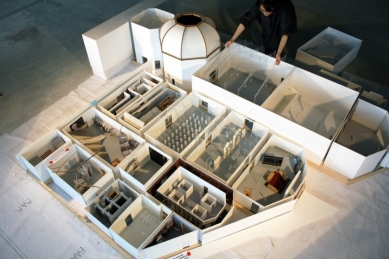

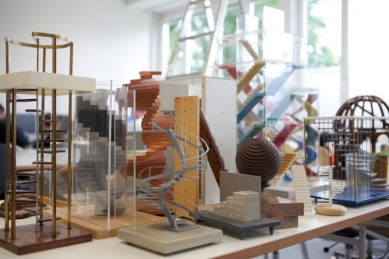

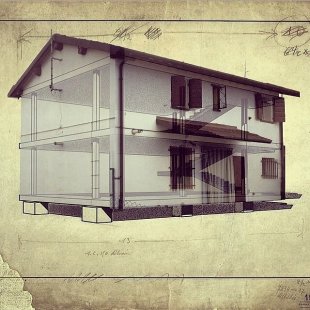

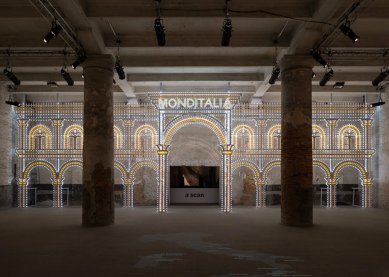
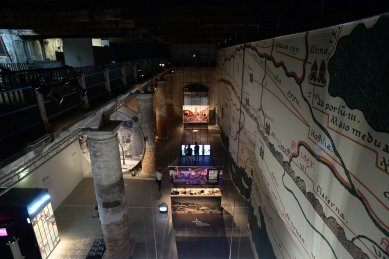

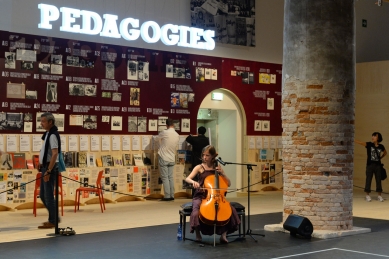
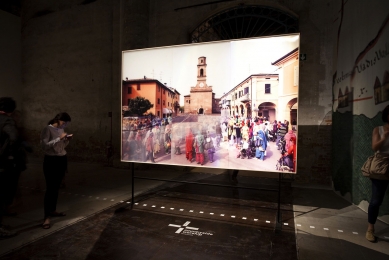
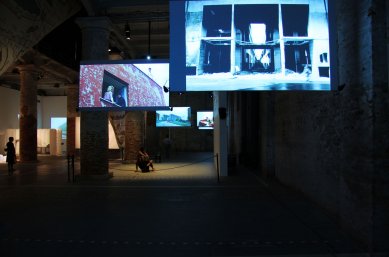

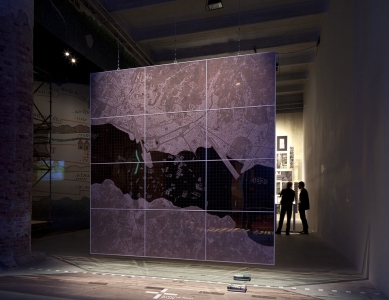
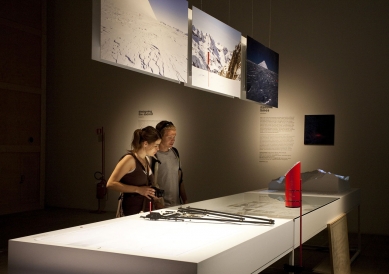
0 comments
add comment
Related articles
0
11.07.2014 | <title>The Venice Biennale 2014 - a look back at individual pavilions</title> The Venice Biennale 2014 - a look back at individual pavilions
0
02.07.2014 | La Biennale di Venezia 2014 - a look back at the exhibition
0
02.07.2014 | The Venice Biennale 2014
0
12.06.2014 | Opening of the exhibition 2x100 million m² at La Biennale di Venezia 2014










